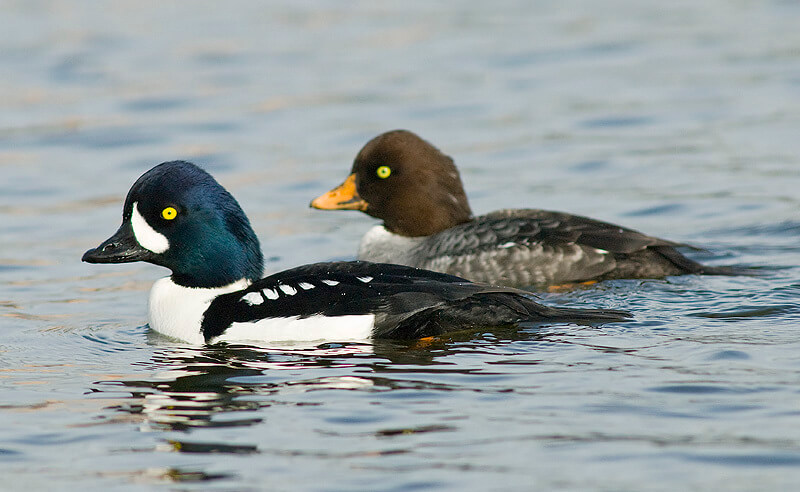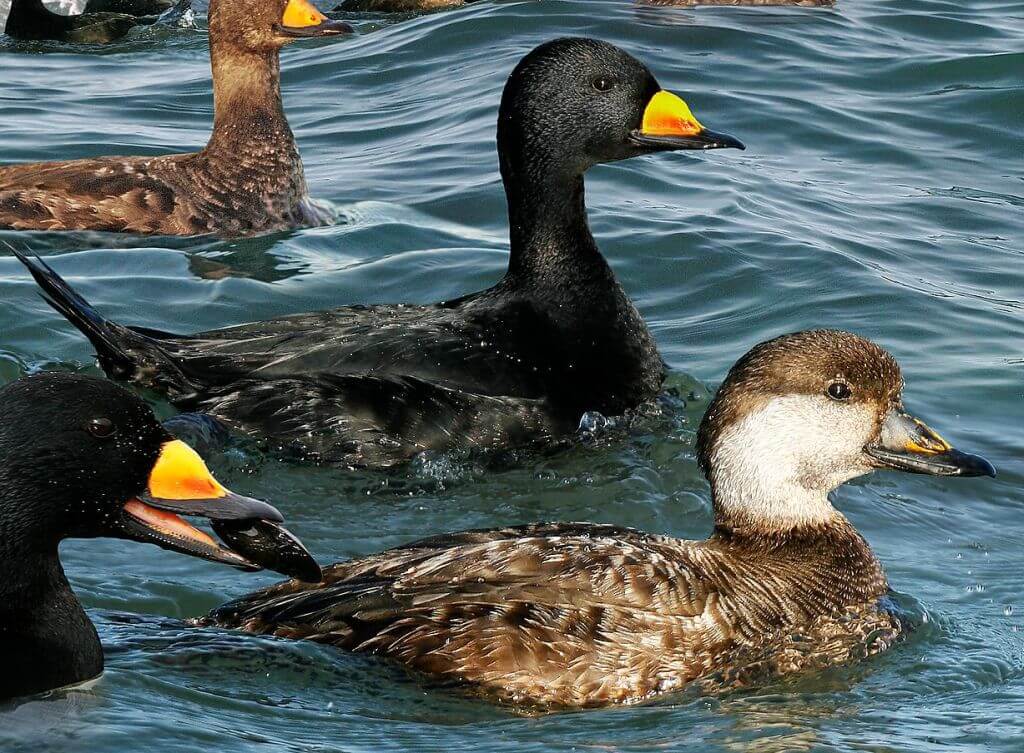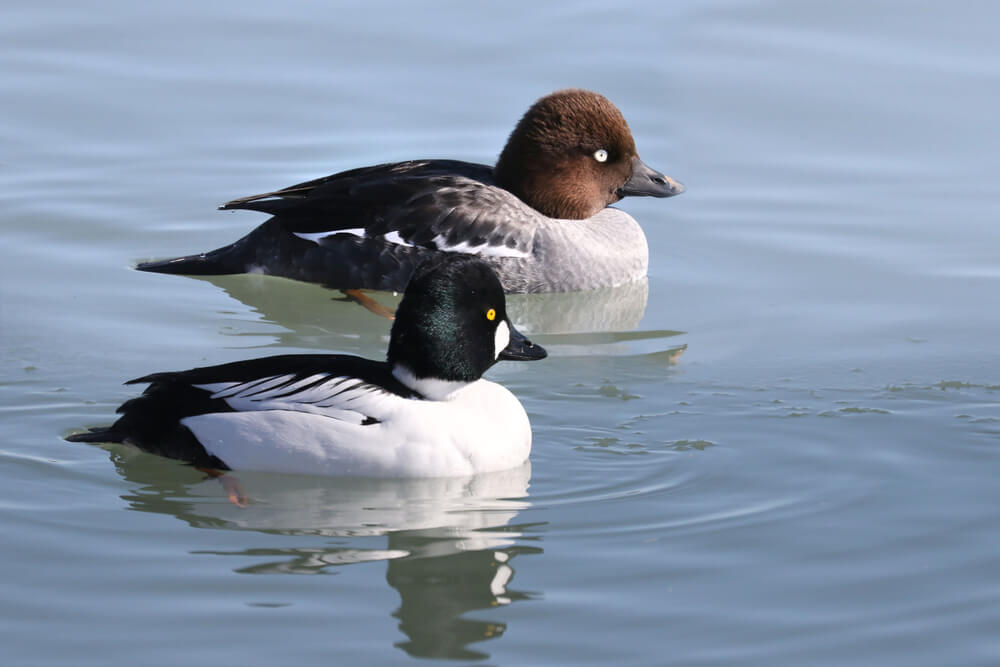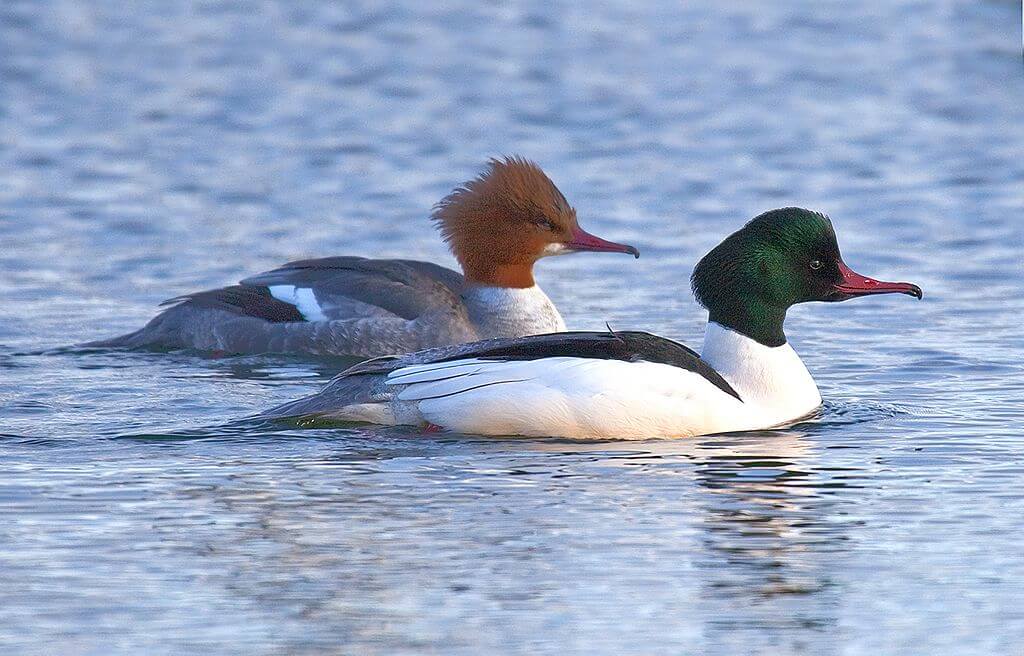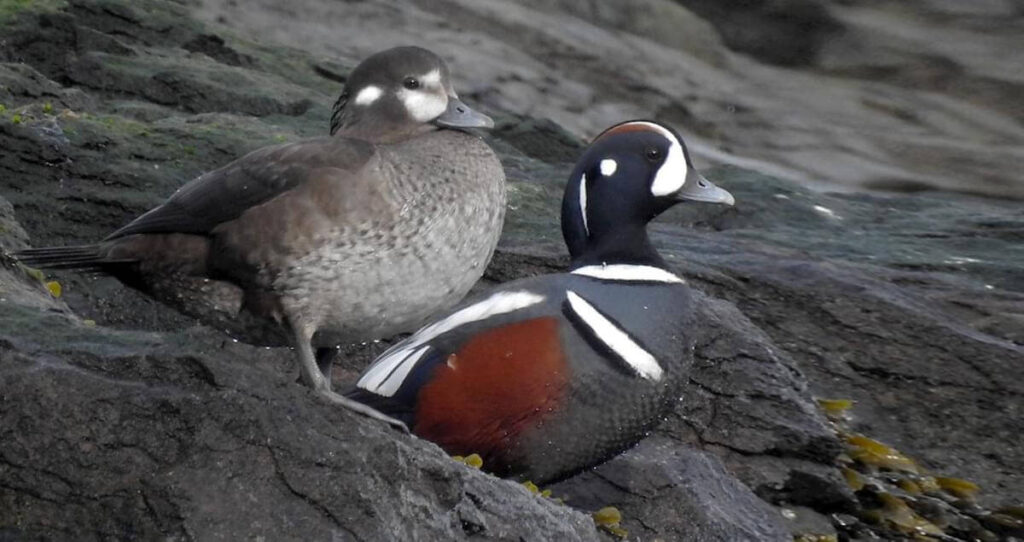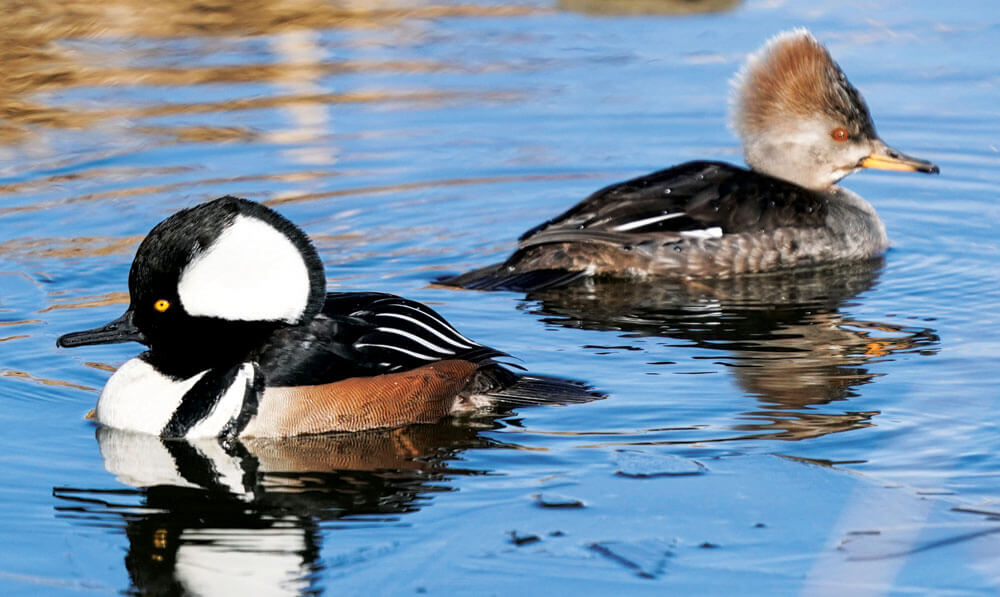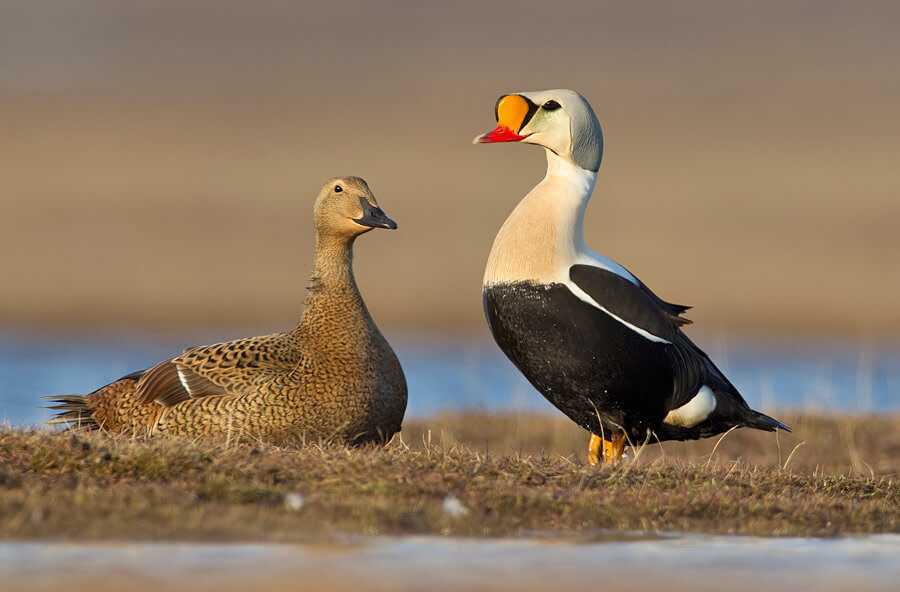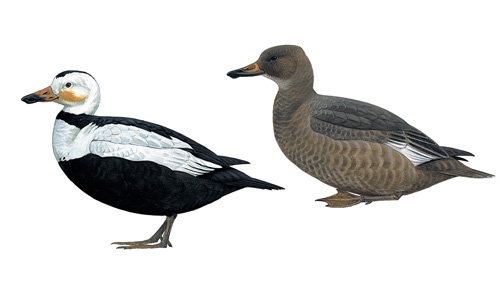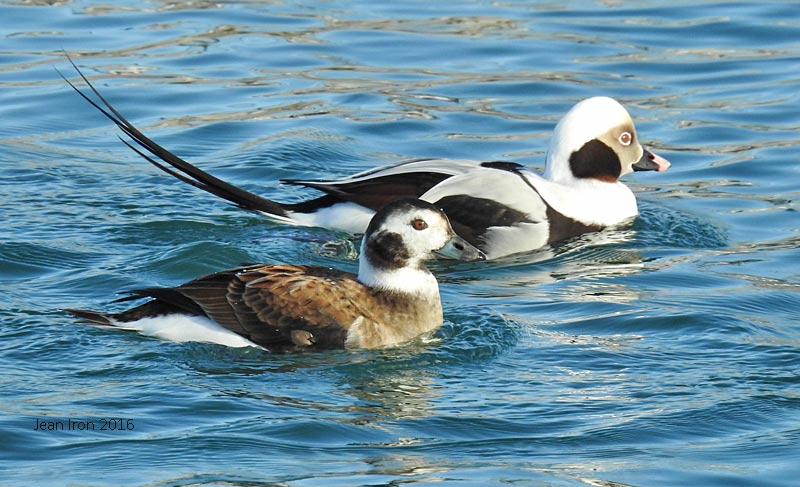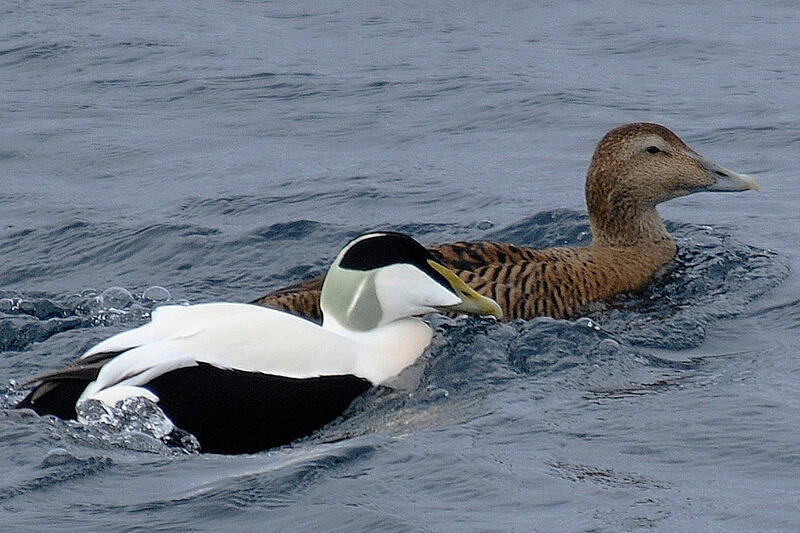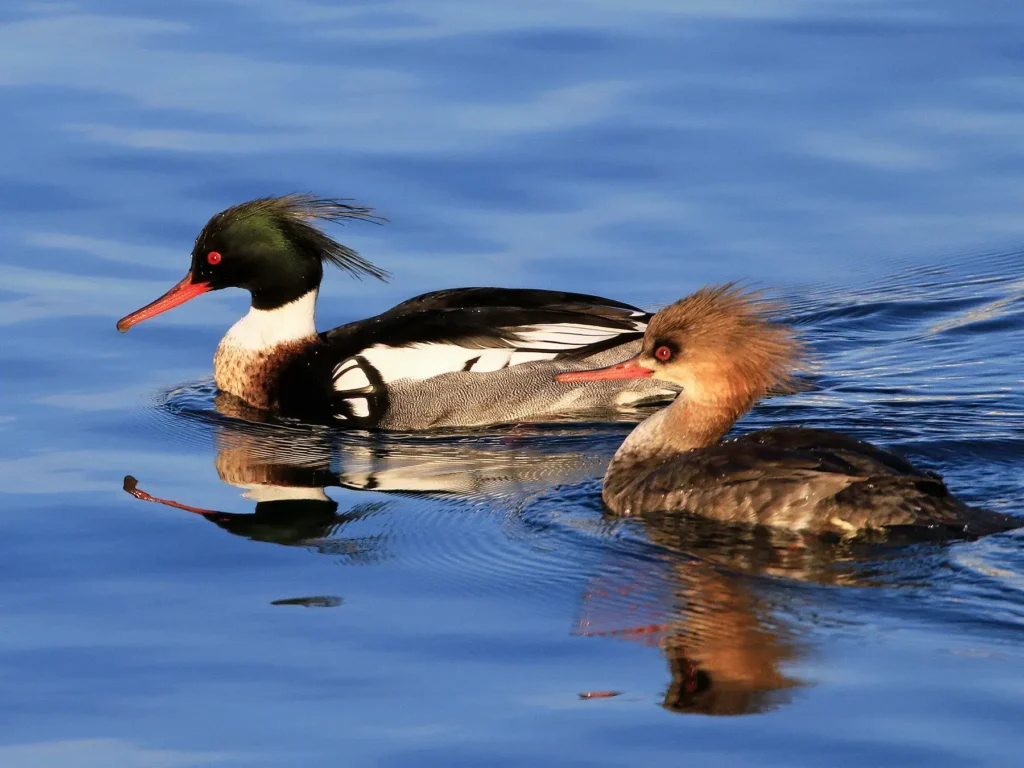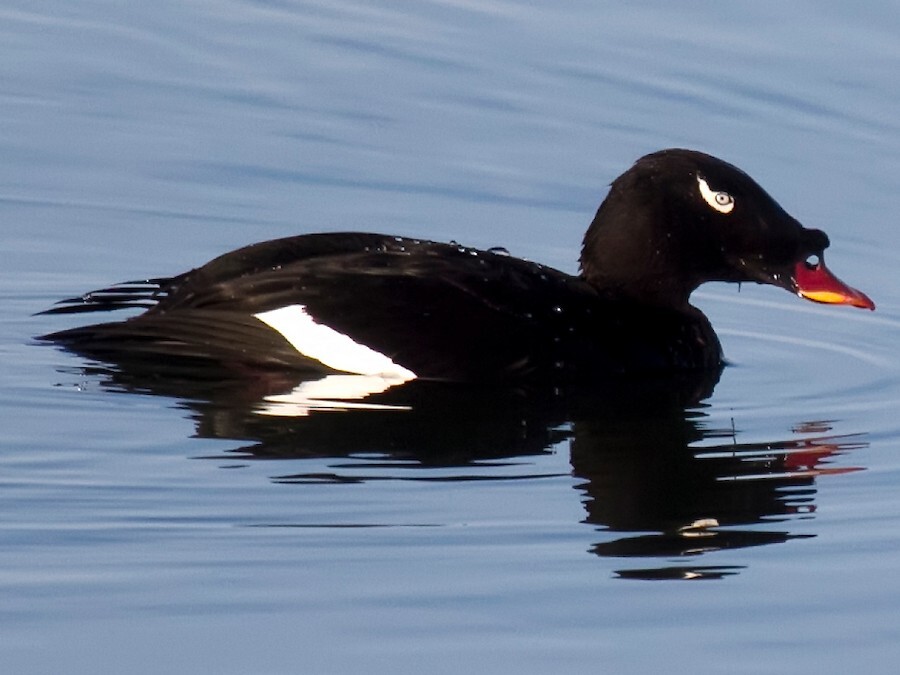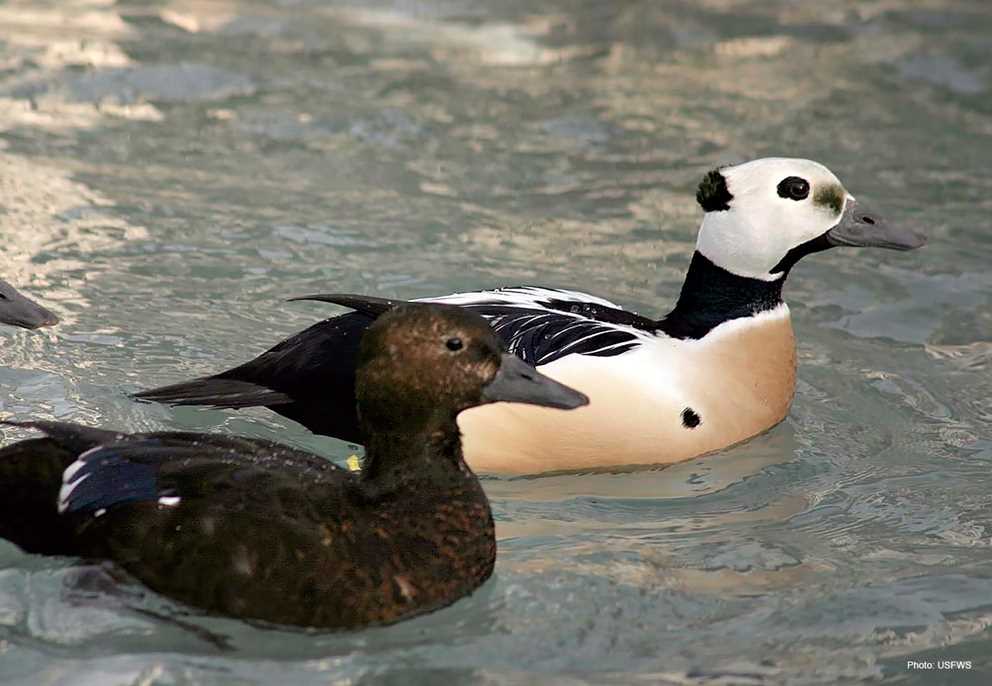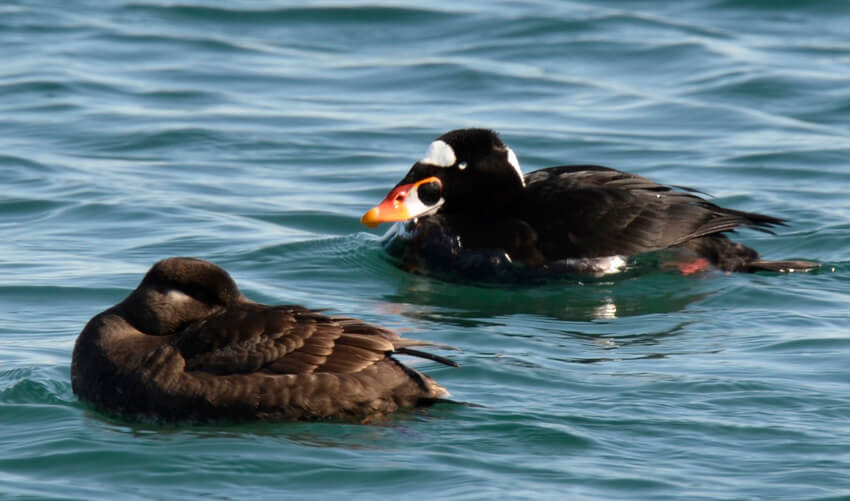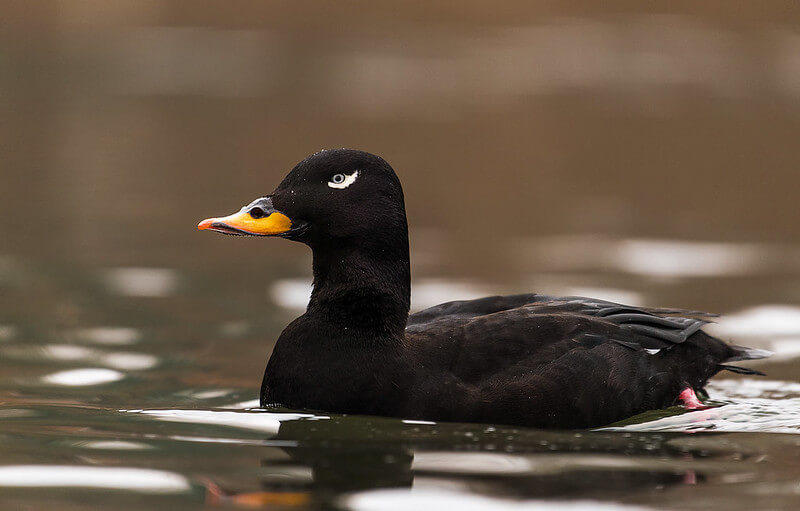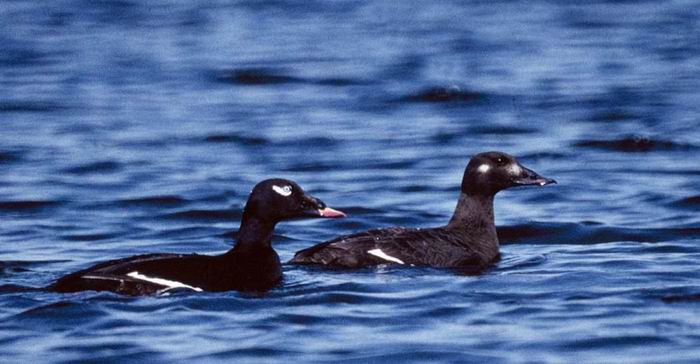23 Types of Sea Ducks
There are around 22 recognized species of sea ducks, belonging to the tribe Mergini within the duck subfamily Anatinae. Below is a list (in alphabetical order) of the most commonly observed sea duck species found across the world’s northern coasts and waterways.
Common Scoter 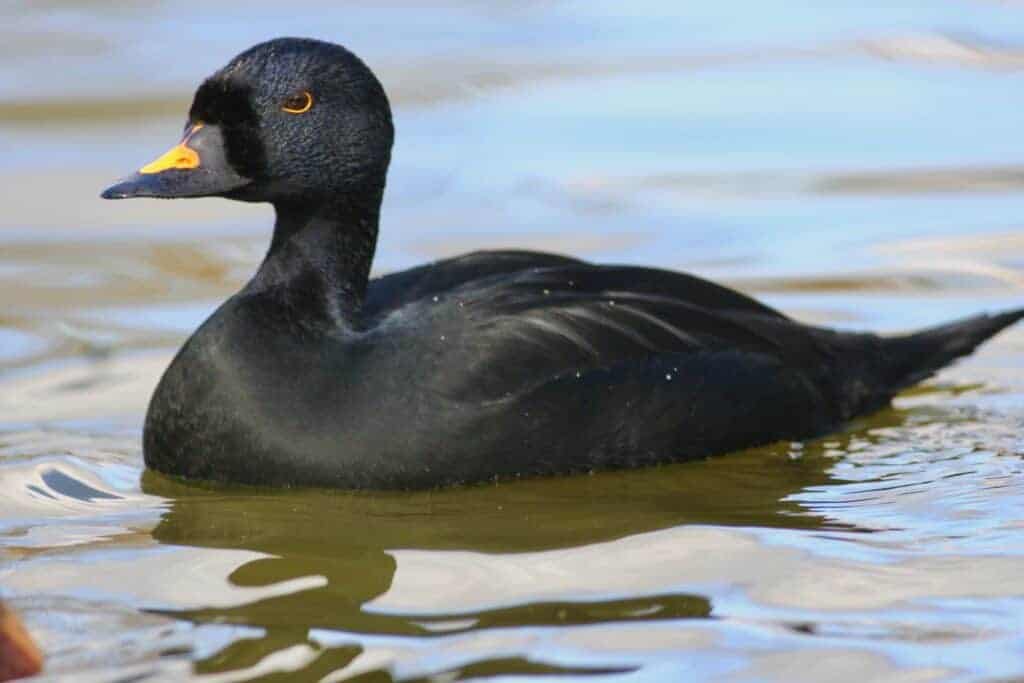 |
|
What are Sea Ducks?
Sea ducks—also known as Merginae—are a remarkable group of waterfowl that spend much of their lives in marine environments. They belong to the Anatidae family, which also includes geese and swans, and are uniquely adapted to life on saltwater coasts and Arctic seas.
Unlike most freshwater ducks, sea ducks can be found in cold, harsh marine habitats, from the rocky shorelines of the North Atlantic to icy Arctic tundra lakes. Their ability to thrive where few other birds can survive makes them one of the most specialized and fascinating groups in the duck world.
Adaptations
Sea ducks are strong divers and powerful fliers, built to withstand cold winds and frigid waters. Their dense down feathers trap a layer of warm air, while their outer feathers are coated with natural oils that repel water.
A defining adaptation is their specialized salt glands, which allow them to excrete excess salt and safely drink seawater—a vital trait for life on the ocean. Their broad, webbed feet, positioned far back on the body, provide exceptional swimming power both above and below the surface.
Habitats & Migration
Sea ducks are found on every continent except Antarctica, though most species inhabit the northern hemisphere. They typically breed in Arctic or subarctic regions and migrate southward in winter, gathering along coastal waters and estuaries.
During migration and winter, large flocks can often be seen off northern Atlantic and Pacific coasts—particularly near bays, fjords, and sandbanks. A trip from nearly any northern harbor might reveal flocks of eiders, scoters, or long-tailed ducks riding the waves.
Recommended: 34 Migratory Ducks You Need to Know About
Conservation Concerns
Despite their hardiness, many sea duck populations are in decline. Surveys in recent decades have shown significant drops in several species, with some now listed as Vulnerable or Endangered on the IUCN Red List.
The causes of these declines are complex but include:
- Oil spills and marine pollution
- Habitat loss from coastal development and resource extraction
- Changes in prey availability due to overfishing and pollution
- Increased ship traffic and disturbance in feeding areas
- Climate change, which alters Arctic ecosystems and breeding success

